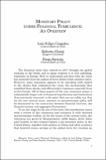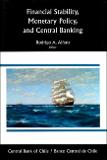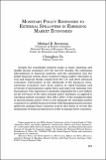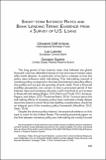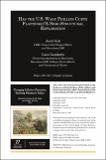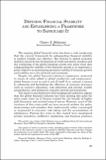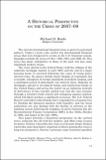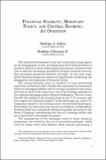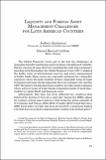Search
Now showing items 21-30 of 48
Monetary policy under financial turbulence
The financial crisis that started in 2007 brought the global economy to the brink, and in many respects it is still unfolding, especially in Europe. While a fierce debate continues on how to understand and deal with the crisis, a consensus is emerging with regard to the originating shocks, the mechanisms ...
Financial stability, monetary policy, and Central Banking
The financial developments of the last decade have had a large impact on the range of risk diversification contracts available to investors. Based on these complex instruments, the investment possibility frontier was shifted outward and increasingly intricate networks were created. At the same time, ...
The leverage cycle default and foreclosure
At least since the time of Irving Fisher economists as well as the general public have regarded the interest rate as the most important variable in the economy. But in times of crisis collateral rates (margins or leverage equivalently) are far more important. Despite the cries of newspapers to lower ...
Monetary policy responses to external spillovers in emerging market economies
Despite the remarkable progress made in many emerging and middle-income economies over the last few decades the continuing liberalization in financial markets and the integration into the global financial system these countries remain highly vulnerable to real and financial shocks coming from the U.S. ...
Short-term interest rates and bank lending terms: evidence from a survey of U.S. loans
The long period of low interest rates that followed the global financial crisis has rekindled interest in how short-term interest rates affect bank behavior. In particular it has led to a debate on how low policy rates influence bank risk-taking. This risk-taking channel of monetary policy corresponds ...
Has the U.S. wage phillips curve flattened? A semi-structural exploration
The deep and prolonged recession triggered by the global financial
crisis of 2007–2009 led to a large increase in the unemployment rate in
most advanced economies. Ten years later, at the time of writing this
paper, the recession has long ended, and the subsequent recoveries
have brought the ...
Defining finacial stability and establishing a framework to safeguard it
The ongoing global financial crisis has been a rude awakening that the current framework for safeguarding financial stability is neither reliable nor effective. The threats to global economic stability caused by the dysfunction of credit and money markets and the weakening of the global banking system ...
A historical perspective on the crisis of 2007-08
The current international financial crisis is part of a perennial pattern. Today’s events echo earlier big international financial crises that were triggered by events in the U.S. financial system. Examples include the crises of 1857 1893 1907 and 1929–33. This crisis has many similarities to those ...
Financial stability monetary policy and Central Banking: an overview
The financial developments of the last decade had a large impact on the management of risk providing more diversified portfolios to investors. Based on these complex financial contracts investors were able to shift the investment possibilities frontier outward however that movement generated intricate ...
Liquidity and foreing asset management challenges for Latin America countries
The Global Financial Crisis put to the fore the challenges of managing liquidity and foreign assets at times of heightened volatility. Earlier concerns of some observers regarding the costs of precautionary hoarding notwithstanding the Global Financial Crisis (GFC) validated the buffer value of ...

